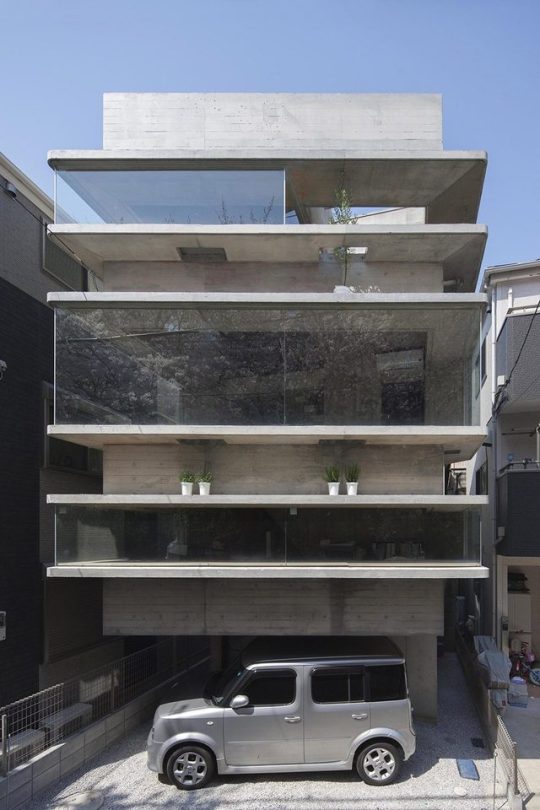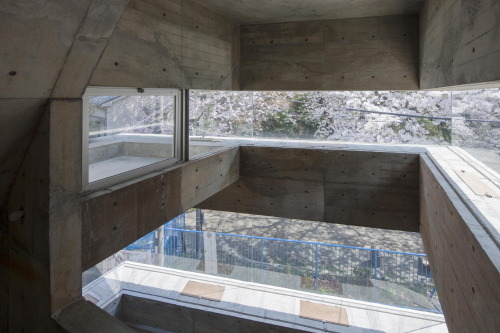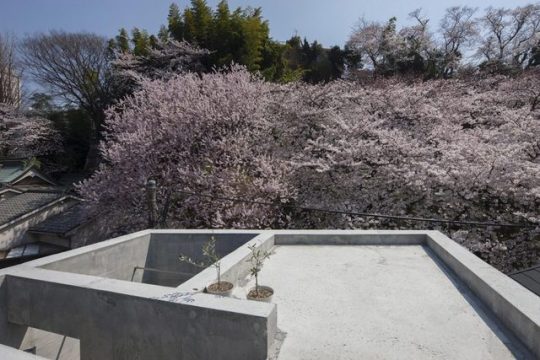The Untapped Gold Mine Of Decorative Concrete That Virtually No One Knows About
Don't wanna be here? Send us removal request.
Text
Decorative Stamped Concrete Repairs
Here is the first day at this particular workplace. We will put a bigger driveway here. We will remove these bushes in motion. The mailbox had already been moved, so it is already clear that these bushes would come out. Part of this slab that we will cut along this brick. There, everything will remove some of that. Remove the entire aisle, we will widen this path as the palm goes out. All these bushes that you see here come out. The bushes along the house will come out. We are going to make concrete all along this column, on the side of the house from the entrance. They will really be expanded. The bridge passes and everything comes back on a slight radius. We will make a descent radius to the street rather than straight lines, and then we will make a front patio here and it will be a swinging lane radius in about 10 feet wide front patio. We're just going to use a 60-pound electric jackhammer here, break it up. I'm going to do some saw cuts. I have a 12-inch diamond blade on this steel cut-off saw and there is the cut. So we can save some of this slab behind the side of the house. In this way, the whole front will be the same, because what we're going to do here, we're going to have one-foot of stamps, some groups, and they're going to be a random little stone, a stamped concrete on the group, and then in the field. We are going to make another color it will be just a solid, color and it will be a broom finish with some decorative seals now.
What we have is a bobcat with a breaker, it must also be the super 10 happens once I'm a little broken I'll start charging this super 10 - and it looks like the depth of this concrete in the area - certainly a load, the bushes, of course, it's going to go in the dump trailer because it's a green waste, and it's a lot, a lot cheaper to throw as green waste, rather than mixing with the concrete loads recyclable. All the concrete goes up and then it is done in what they use for a road base or any type of base under pavers, especially pavers. It is really popular just under the concrete making it a nice base. You do not need a lot of base in this area, in Southern California, with a conch, not with concrete and rebar, but when you use pavers or things like that, it does not have not really structural value. You will have to put something underneath to keep it there. So, this is the original alley. With this house, about 40 years old very well held, they used a look like a three-quarter-inch rock, probably 2500 psi, we're going to do a 3000 psi. We are going to use the mix of the pump, so there is 3/8 of the rock, but we are going to throw rebar here at 2. Foot centers and we're also going to add fiber mesh in the mix. These two reinforcements do different things. They do not do the same thing. The rebar holds it more of a structural crack.
Fiber is just for shrink cracking and another unwanted substance is useful just for other general purposes I like fiber. For now, we have a nice picture about it. In fact, a landscaper came for this job. The owner was a bit unsure of the design they knew. They wanted to remake the entire yard before they arrived, so I went with a landscaper I worked with. In recent years - and she has developed pretty decent shots - easy to read, we have already removed all the concrete. Now, what we are doing is we are going to start, try to do the layout on the forums and what we are working on is a drawing. It's a 3/8 inch scale and what that means is that not every three eighths of an inchthe plant is a foot, so we have a structural scale rule that is divided into three eight divisions, which is really easy. You can do it with a regular tape measure, just faster and easier with it. If you have the rule, this kind of broken in increments of three eighths of an inch. Here is the new drawing that will look like this. You can see, we have double band running through the driveway. These are just wet joints. A group of feet, which basically goes, will be monolithic, it's the same color and the whole perimeter is going to be a separate floor and it's going to be the little random stone stamp. So we have two poured here and it's stamped concrete and, of course, the field in the middle area. It's just a broomstick out there now tying these two things together is really crucial. These narrow strips, with the aisle as they are not cast at the same time, they actually have a cold seal, which means they are not connected, but we will connect them with speed studs in this particular case. not used any of my videos yet, but in this one it took a lot of troweling. So, instead of having to drill every two feet around the entire perimeter of both sides, we just screwed speed studs inside the shape leaving a hollow place. Concretely, when you take out your shapes, you simply slip your studs into the template. The nails are really beautiful for something like that, they give a little movement, but that prevents it from changing elevation, in other words, lateral movement. You can get with the slippy, but you will not know the vertical movement. Here is the water meter all we had to do some mods here. So I have a tool to turn off the water meters, and that's what they look like. Turn the handle and the water meter is off so you can work on the irrigation system, which is why we, what we were doing there. We closed the main because we had to rework the main entrance of the house.
So, we could make it fall for some watering faucets, it's just something that I do for the landscaper who does the landscaping of what I'm doing just the hard surface. Also in the middle of this driveway, we ran a three-inch pipe. It's a sleeve, basically or a conduit for watering lines, low voltage, lighting or anything you want to go through because there's a lot of space in a 3-inch pipe. Now, I ended up digging this job a little bit. You know it's not real. Pleasant terrain conditions that I recognized quite quickly when I started demonstrating and can see when you arrive in areas that look at other lanes in the area or even look at the street in the area . In this case, I looked at The Street and noticed how cracked the street was and a shape like this and other alleys. I knew there was probably a soil condition here that I will have to destroy, and then I went ahead and gave a plot of about two or three inches of a mixture of sand and rocks. It's basically a rejection and that's what I like to call sand that you do not use in a mortar mix, but you can use it. It's a good base, so it's the rejects, and now that's what they do. What we are doing now is that we are going to try to distance the distance from this planter, but it's between the gangway of the driveway, and you can see, there is a slight curve, and we want to try to build that according to plan. As close as possible, I will evolve this planner in a few places throughout, then I will drive my stakes to this depth, these points and then I will just wrap my arSd she. Now here is the width of the bridge, if you can see with the scale 3/8 there and how it goes down, so it goes from 0 to 1, 1 in increments. So here are the two points of this groove here, then the planners on the left side of this line. It's a good sized walkway for this particular home design. Have you been too wide or too narrow? It really depends on your door. The width and even where your column is located and that's what will determine the size of the gateway that you really want to use. Plus, you know that the size of your yard has a lot to do with that. , Music, it's two feet! Basically just at the end of this planner width to zero. It works in the other direction of the rule, but you go in that direction from left to right. The way this rule is laid, now you are three feet in the middle. You want to ignore 14 and 13, because it's actually the other side of the rule. So, you want to go to 0-2. While 14 is really F.
It's really a 1 going in that direction. You know, here's the folding panel, I use this plastic, a half-inch composite on one side and on the other, I use a quarter inch and it has a masonite membrane on it Inside a plastic wrap, although you can use a lot of different materials, you can use it, and you can achieve the same result with virtually anything that depends on the materials you have or what you have. So here's the opening of your planner, that's what it looks like now. Your stamped concrete strips turn the determination of the width of these and the lengths. Now, the way this drawing draws the tape that runs through the passage is very narrow, as you can see on the back of this ruler, so we zoom in a bit. So when you create groups that are not monolithically filled with the terrain map, you want to keep at least one foot on them, otherwise they will just separate from you because you want to be able to get at least two bars going down. All of these bands - that's what's really going to happen: music. So with this failure of the house, a bit of the house for the other group to start running the other way along the front door. What we will do here is that we are going to pour all the stamp of the band and all the stamp, which is all stamped, small and random, and it will be two-colored, which means that I will have one. with the concrete and the secondary color will be my release for the stamps, then when you do, the key will have a two-color effect. I will use a color herdon this particular project, which means it's a dust, while the concrete is still wet on a type of 50,500 psi. Staining method checking the transverse slope on my bands. Now, if you wanted to be really complicated on something like that, if you said, you were on a gable slope a bit of a hill that you just want to define the two outer perimeter forces, we're in a chain all the way that way, everything would be on a constant slope in one direction, that's all, and you can see a lot of air in these forms. That means it's probably four inches or more. These two by four are actually three and a half inches. So, you see the space under them is more than three and a half years. Now, all the rebar that is going to be cut is going to be four dowels, so we have all the bands set up here.
There are other groups crossing this path. Of course, these are not set up, but we have the group in front of the brick column. We have the group that goes directly to the street, and this particular sidewalk in this street is what It's called a rolled sidewalk. You can see that it is much easier to sink than a typical sidewalk, because you only have two shapes instead of three and you have nothing to do without undressing and getting by with all your hands free. not a lot of thinking when you make those kinds of limits. Here are the speed studs here, so we are aiming for a small adapter, which is reusable. These red plastic sleeves are not reusable. They stay in the concrete, they are hollow and when the form comes off, you fall back on the stamped concrete hampton nh, it will sink the next pour now. You have something that will not collapse. You can even epoxy if you wish, but there is no real need. So here's what we have here: an eighteen-inch group is the entrance to the driveway outside the school. What is it? He is 17 years old, a quarter. So, it is about three quarters of an inch thick. Now we have to measure a lot of these streets in a small radius, so you want to measure just about everything. Every issue to make sure you follow the street radius here, we will do meanwhile we can not use plastic dials there because it is already fired. That means we had an exercise to get rebar in those places. Now we use the speed fasteners, which means that these wires are pre-cut to four six or eight inches and the size of the rebars you have, you will use 4 inches. Speed-Dials is enough for a couple of 3/8 bars now a good Buster rebar will laugh at your use on those little wires with these pre-cut wire loops and they'll actually tie yeah just with a roll of wire on a belt but it's nice for beginners using these loops. If you do not, do it a lot? Another interesting thing about using buckles is: if you have an air tire on your barrel, you roll on it. You will not get a puncture on your wheel, the wheelbarrow. So if you use the roll of wire and you twist and cut, there are a lot of little claws, by placing yourself that you might have a tire flat in your wheel, wheelbarrow, here is a sewer cleaning what we have to do . We will put a nice removable brass cap on this one that will flush out the coffee. So, all you will see is the brass cap. Well, it takes a few screws to remove it, but that's about it and it's your ABS glue. These are three inches mm. The reason there are two, the way it works, one of the thoseleaning goes to the direction of the house. He has one that you know he sweeps yeah, he has a sweep.
One of them on one of these amounts has a sweep towards a house. The other has a sweep towards the street. So if you run a snake in one or the other depending on which direction you want to go, that's it. Why are there two together? They make sweet teas that go both ways, but they are not as beautiful as making individual pipes with long sweeps. So we had to make a small modification on these fittings because the pipe Heights is nice, the plumbing in the concrete like that once the concrete turned, nothing will move again if you have glue or not. It's okay. Get out when the car goes around it, so that's access and after, the small brass fittings will bypass those that will lead to the top of the patio. So, everything you see out there will be hidden under concrete heights right now is not really crucial because you have a little game with your brass necklace. It will work around that. This gives you the path, I will probably up to about an inch of adjustment on your brass necklace. It will be around that, so get them together and that's about it. And then you can do your adjustment with youradjustable nuts on the collar. Now, these must not be really tight. You want to make them so easy to remove if you need them in the future, so we put them together. Maybe a little slow transverse slope, here is the small front patio! We surround him right next to the front door and since then we maintain love. There was a lot of cross slope of the door to the right. Porch, as we approached the level along the facade, we had to make a thickened edge. So many times where I'm in those situations where the existing quality platform is tilted rather than adding topsoil.
2 notes
·
View notes
Photo






Shinsuke Fujii Architects. Oriel Window House. Yokohama. Japan. photos: Tsukui Teruaki
3K notes
·
View notes
